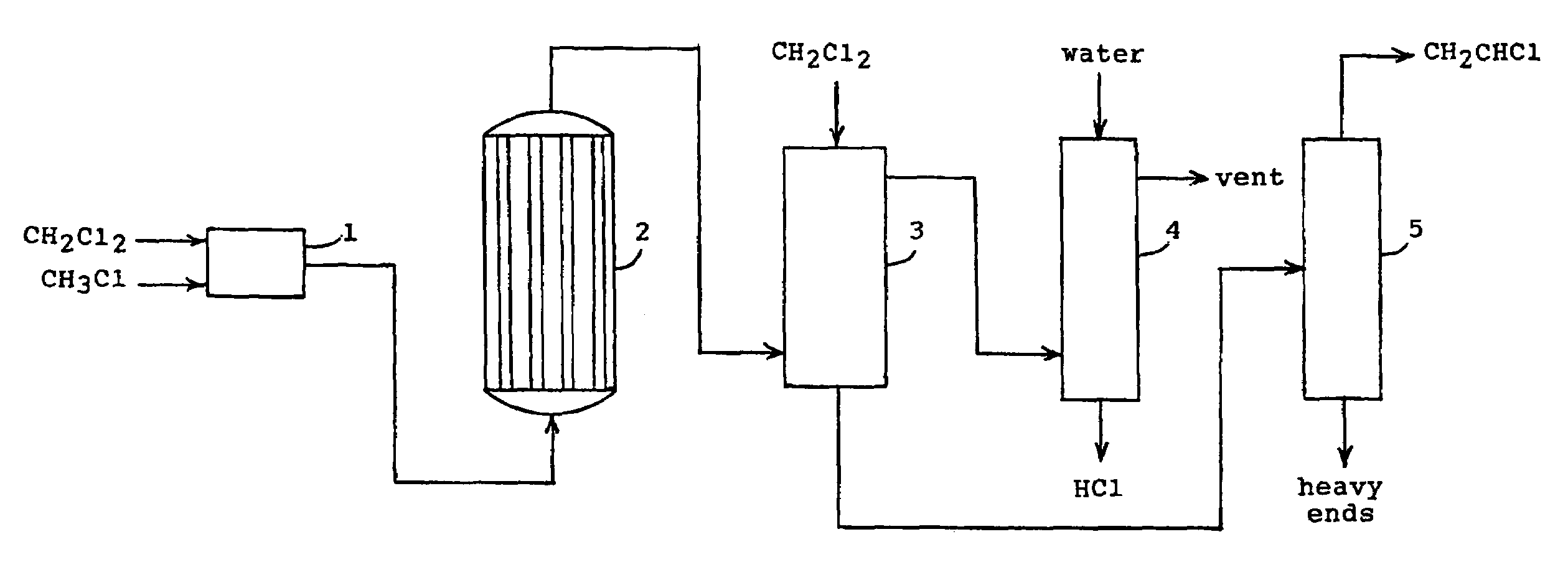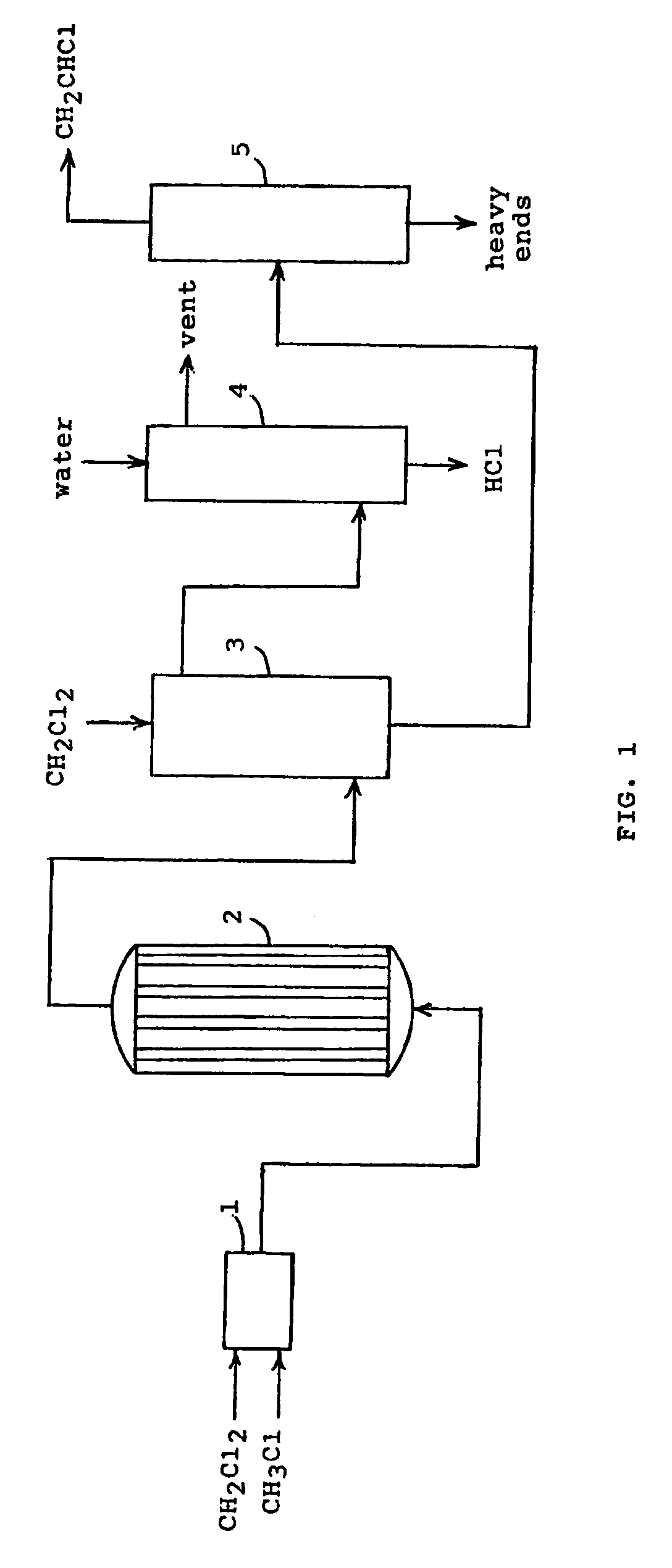Method for producing vinyl chloride monomer
a technology monomer, which is applied in the field of production method of vinyl chloride monomer, can solve the problems of the relative inactivity of these two hydrocarbons and and achieve the effect of reducing the cost of ethylen
- Summary
- Abstract
- Description
- Claims
- Application Information
AI Technical Summary
Problems solved by technology
Method used
Image
Examples
Embodiment Construction
[0008]In the process of the present invention, one molecule of methyl chloride (CH3Cl) is reacted with one molecule of methylene chloride (CH2Cl2) in the presence of a catalyst to produce one molecule of vinyl chloride (CH2CHCl) and two molecules of hydrogen chloride (HCl). The reaction can be represented by the following equation.
CH3Cl+CH2Cl2→CH2CHCl+2 HCl (I)
[0009]The thermodynamics for this reaction is highly favorable so that the reaction essentially goes to completion. Using data for the enthalpies and the Gibbs energies of formation for the reactants and the products, the equilibrium constant was determined for several reaction temperatures. Thus, the logarithm of the equilibrium constant Kp equals 4.59 at 300° C., 5.00 at 400° C., and 5.32 at 500° C. The thermodynamic data also indicate that the reaction is endothermic so that heat must be supplied to the reaction.
[0010]The results for the conversions at the given temperatures would suggest that the reaction could be carried...
PUM
| Property | Measurement | Unit |
|---|---|---|
| molar ratio | aaaaa | aaaaa |
| temperature | aaaaa | aaaaa |
| pressure | aaaaa | aaaaa |
Abstract
Description
Claims
Application Information
 Login to View More
Login to View More - R&D
- Intellectual Property
- Life Sciences
- Materials
- Tech Scout
- Unparalleled Data Quality
- Higher Quality Content
- 60% Fewer Hallucinations
Browse by: Latest US Patents, China's latest patents, Technical Efficacy Thesaurus, Application Domain, Technology Topic, Popular Technical Reports.
© 2025 PatSnap. All rights reserved.Legal|Privacy policy|Modern Slavery Act Transparency Statement|Sitemap|About US| Contact US: help@patsnap.com


